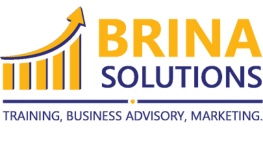
In an increasingly competitive market, automation has become essential for businesses looking to streamline operations, reduce costs, and improve productivity. However, implementing automation without careful evaluation can lead to inefficiencies and misaligned investments. This comprehensive guide will help you assess whether your business is ready for automation and how to proceed effectively.
1. Understand the Benefits of Automation
Before diving into automation, it’s crucial to recognize the advantages it offers. Businesses typically adopt automation to:
- Enhance efficiency: Eliminate repetitive tasks and reduce manual errors.
- Save time and costs: Streamline workflows to allow employees to focus on higher-value tasks.
- Scale operations: Handle increased workloads without proportionally increasing resources.
- Improve customer experience: Offer faster, consistent, and personalized services.
Understanding these benefits will help you align automation goals with your business strategy.
2. Define Your Objectives
Clear objectives form the backbone of a successful automation strategy.
Questions to Ask:
- What are the specific pain points you aim to address?
- Do you want to improve internal processes, customer interactions, or both?
- How will automation align with your long-term business goals?
Example Objective: Reduce order processing time by 50% using automated inventory and payment systems.
3. Evaluate Your Current Processes
A detailed review of your existing workflows will help identify areas where automation can make the most impact.
Steps to Analyze:
- Map Workflows: Break down processes into individual steps to spot inefficiencies.
- Categorize Tasks: Identify tasks that are repetitive, time-consuming, or prone to human error.
- Gather Feedback: Consult employees to understand pain points and inefficiencies in their daily operations.
Example: Automating invoicing can save hours each week, allowing your finance team to focus on strategic planning.
4. Assess Resource Availability
Automation requires an investment of time, money, and expertise. Conduct an audit to ensure your business is equipped to adopt automation.
Areas to Assess:
- Financial Capacity: Estimate upfront costs for software, training, and integration, and compare them against projected ROI.
- Technological Infrastructure: Ensure your existing systems can integrate with new automation tools.
- Workforce Readiness: Identify skill gaps and plan training sessions to prepare employees for new tools.
Tip: Start with cost-effective automation solutions that align with your budget and scale gradually.
5. Identify Key Areas for Automation
Not all business functions require automation. Focus on areas where it will have the most significant impact.
Examples of Automatable Functions:
- Customer Service: Use chatbots to handle common inquiries and free up staff for complex issues.
- Marketing: Automate email campaigns, lead scoring, and social media posting.
- Finance: Implement tools for invoice processing, payroll management, and financial reporting.
- Operations: Automate inventory tracking, supply chain management, and order processing.
Example: E-commerce businesses can automate order fulfillment, reducing manual intervention and errors.
6. Engage Stakeholders and Build Support
Automation impacts multiple teams, so collaboration is essential. Involve stakeholders from different departments to:
- Identify specific needs and priorities.
- Address concerns about job displacement or changes in workflows.
- Gain buy-in and support for a smooth implementation process.
Pro Tip: Emphasize that automation complements human roles, enabling employees to focus on creative and strategic tasks.
7. Research and Select the Right Tools
Choosing the right automation tools is crucial for achieving your objectives.
Factors to Consider:
- Functionality: Does the tool address your specific needs?
- Integration: Can it seamlessly integrate with existing systems?
- Scalability: Will it grow with your business?
- Ease of Use: Is it user-friendly for your team?
Popular Automation Tools:
- Customer Service: Zendesk, HubSpot Service Hub.
- Marketing: Mailchimp, ActiveCampaign.
- Finance: QuickBooks, Xero.
- Operations: Asana, Monday.com, Zapier.
8. Test and Implement Gradually
Start small by automating one or two key processes. Monitor performance and gather feedback to refine the system before scaling.
Steps for Implementation:
- Pilot Phase: Test automation tools on a smaller scale to identify potential issues.
- Training: Provide comprehensive training to employees on how to use the new tools effectively.
- Feedback Loop: Regularly collect input from teams to optimize workflows.
Example: A retail business might begin by automating inventory management before expanding to marketing campaigns.
9. Monitor Performance and ROI
Track the impact of automation using performance metrics to ensure it meets your goals.
Key Metrics to Monitor:
- Time Savings: Measure the reduction in time spent on repetitive tasks.
- Cost Efficiency: Compare operational costs before and after automation.
- Employee Productivity: Track how automation allows teams to focus on higher-value work.
- Customer Satisfaction: Evaluate improvements in response times and service quality.
Pro Tip: Use analytics tools to generate insights and continuously refine your automation strategy.
Conclusion: Embrace Automation for Sustainable Growth
Automation is a transformative tool that can drive efficiency, improve customer satisfaction, and position your business for growth. By thoroughly assessing your needs and carefully planning your implementation, you can maximize the benefits while minimizing risks. Start small, monitor results, and scale gradually to achieve sustainable success.
Ready to automate your business processes? Brina Solutions offers expert guidance to help you identify opportunities and implement the right tools. Contact us today to get started!







Leave a Reply